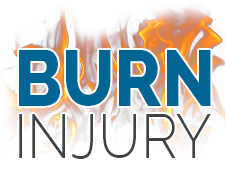What Causes Third Degree Burns?
Third degree burns are often referred to as full-thickness burns. This type of burn eliminates the epidermis and the dermis, which are the top two layers of skin, and can affect tissues beneath the skin, such as adipose tissue. This type of burn can be extremely painful, but in some cases nerve tissue is destroyed and the patient does not feel any pain.
Third Degree Burn Causes
What causes third degree burns can include any of the same sources that cause lesser burns. The length of time that the body is exposed to the burn source and the temperature or intensity of the heat play a role in determining the degree of the burn. Most third degree burns can be classified as thermal burns, which are caused by exposure to a heat source. These differ from radiation and chemical burns.
Sources of third degree burns include:
- Scalding liquids
- Flame
- Friction
- Radiation
- Direct skin exposure to heated objects
- Electricity
- Exposure to certain chemicals
Exposure to Burn Sources
Most third degree burns occur at home or at a patient’s place of employment. Professions such as firefighting or working directly with electricity will obviously put employees at risk of exposure to burn sources, but almost all professions carry an inherent risk of burn exposure. Another leading cause of third degree burns is automobile accidents.
Home Third Degree Burns
Causes of third degree burns at home include:
- Cooking accidents
- Firework malfunctions or improper handling of fireworks
- Improperly stored gasoline
- Skin contact with space heaters
- Electrical exposure from outlets or appliances in disrepair
- Parental abuse
- Children chewing on cords or touching hot objects
Occupational Third Degree Burns
The sources of third degree burns in places of employment are vast and vary greatly depending on the occupation. Many places of employment are seeing an increase in the incidence of electrical burns due to the introduction of new technology. New technology requires an increase in the quantity of electrical equipment and therefore increases the risk of electrical burns.
Other causes of third degree burns in the workplace include:
- Thermal burns in food service kitchens
- Electrical burns to cable, construction, or electrical workers
- Hot asphalt burns to road construction workers
- Friction burns to carpenters or wood workers
- Chemical burns to chemists, teachers, medical workers and scientists
- Radiation burns to military workers or medical workers
Automobile Accident Third Degree Burns
Automobile accidents can cause third degree burns in a few different ways. If the patient was on a motorcycle or was thrown from the vehicle, the patient can have third degree friction burns from exposure to the road. If the vehicle started on fire, the patient may be exposed to flame or hot metal.
If the electrical system on the car is compromised, the patient could be exposed to electricity. Patients that have been involved in a major automobile accident will often have other injuries, so it is important for the patient to seek medical attention. Shock or nerve damage may prevent the patient from feeling third degree burns.
Sources:
“Burns.” Healthline. Healthline Networks, 18 Jul 2012. Web. 27 Dec 2013. <http://www.healthline.com/health/burns>.
“Burns.” Medline Plus. U.S. National Library of Medicine, 31 Oct 2013. Web. 27 Dec 2013. <http://www.nlm.nih.gov/medlineplus/ency/article/000030.htm>.
“Third-Degree Burns (Full Thickness Burns).” University of Rochester Medical Center. University of Rochester Medical Center, 27 Dec 2013. Web. 27 Dec 2013. <http://www.urmc.rochester.edu/Encyclopedia/Content.aspx?ContentTypeID=90&ContentID=P01760>.













